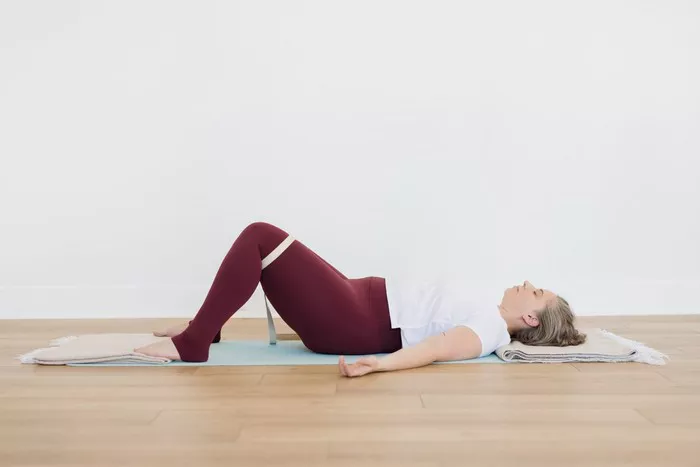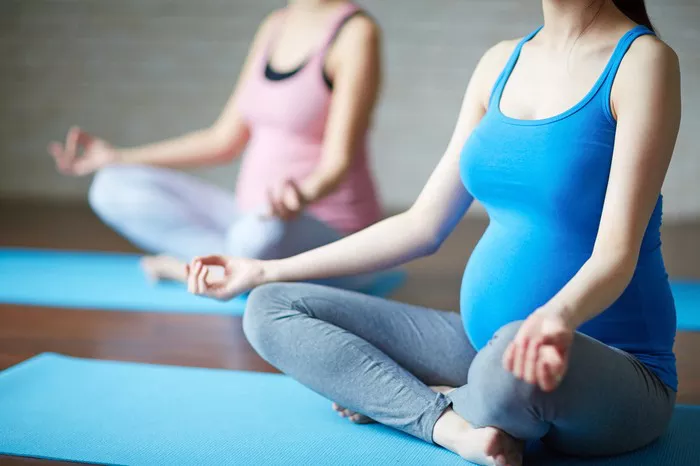Yoga straps are invaluable accessories for practitioners of all levels, aiding in flexibility, alignment, and deepening stretches. This versatile tool can be a game-changer in enhancing your practice by providing support and enabling you to perform poses with greater precision. Whether you’re a beginner or a seasoned yogi, incorporating a yoga strap into your routine can help you achieve new heights in your practice.
Benefits of Using a Yoga Strap
Improved Flexibility
One of the primary benefits of using a yoga strap is its ability to improve flexibility. For those who are unable to reach their toes or clasp their hands behind their back, a strap provides the extra length needed to bridge the gap, allowing for a gradual increase in flexibility over time.
Enhanced Alignment
Using a yoga strap can help maintain proper alignment in various poses. By offering support and guidance, the strap ensures that you hold poses correctly, which is crucial for preventing injuries and getting the most out of each stretch.
Deeper Stretches
A yoga strap allows you to safely deepen stretches without overextending or straining muscles. This is particularly beneficial for poses that require significant flexibility, such as forward bends or hamstring stretches.
Support and Stability
For beginners or those with limited mobility, a yoga strap provides much-needed support and stability. It acts as an extension of your arms and legs, making it easier to balance and hold poses.
Rehabilitation and Injury Prevention
Yoga straps are excellent tools for rehabilitation and injury prevention. They enable gentle stretching and strengthening, which can aid in the recovery process and help prevent future injuries by promoting proper form and flexibility.
Choosing the Right Yoga Strap
When selecting a yoga strap, consider the following factors:
Material
Yoga straps are typically made from cotton, nylon, or hemp. Cotton straps are soft and comfortable, while nylon straps are durable and less likely to stretch out over time. Hemp straps offer a natural, eco-friendly option.
Length
Straps come in various lengths, usually ranging from 6 to 10 feet. A 6-foot strap is generally sufficient for most users, but taller individuals or those who plan to use the strap for more complex poses may prefer a longer option.
Width
Straps are available in different widths, typically 1 to 1.5 inches. A wider strap offers more comfort and stability, while a narrower strap may be easier to handle and adjust.
Buckle Type
Yoga straps feature different buckle types, including D-ring, plastic cinch, or quick-release buckles. D-ring buckles are the most common and provide secure, adjustable fastening. Plastic cinch buckles are lightweight and easy to use, while quick-release buckles allow for rapid adjustments.
Incorporating the Yoga Strap into Your Practice
Warm-Up Stretches
Begin your practice with warm-up stretches using the yoga strap. This helps to prepare your muscles and joints for more intense poses.
Shoulder Stretch: Hold the strap with both hands behind your back, with your arms extended. Gently pull the strap upward to stretch your shoulders and chest.
Hamstring Stretch: Sit on the floor with your legs extended. Loop the strap around the balls of your feet and gently pull forward, keeping your back straight to stretch your hamstrings.
Assisted Poses
Use the strap to assist in poses where you need extra reach or support.
Reclining Hand-to-Big-Toe Pose (Supta Padangusthasana): Lie on your back and loop the strap around the arch of your foot. Straighten your leg toward the ceiling, using the strap to gently pull your leg closer and deepen the stretch in your hamstring.
Seated Forward Bend (Paschimottanasana): Sit with your legs extended. Loop the strap around the soles of your feet and hold the ends with both hands. Inhale to lengthen your spine, then exhale as you gently fold forward, using the strap to maintain alignment and deepen the stretch.
Enhancing Advanced Poses
For more advanced practitioners, a yoga strap can help you achieve and hold challenging poses with better form.
King Pigeon Pose (Eka Pada Rajakapotasana): From a pigeon pose position, loop the strap around your back foot. Hold the other end of the strap with both hands and gently pull to bring your foot closer to your head, deepening the backbend.
Dancer Pose (Natarajasana): Stand on one leg and loop the strap around the arch of your lifted foot. Hold the strap with both hands and gently pull to lift your foot higher, opening your chest and shoulders.
Modifications for Beginners
For beginners, the yoga strap can make many poses more accessible.
Bound Angle Pose (Baddha Konasana): Sit with the soles of your feet together and knees bent. Loop the strap around your feet and hold the ends with both hands. Use the strap to gently pull your feet closer to your body, opening your hips.
Cow Face Pose (Gomukhasana): Sit with one leg crossed over the other. Hold the strap in one hand and reach behind your back, grasping the other end with your other hand. Use the strap to gently bring your hands closer together, opening your shoulders.
Post-Practice Cool Down
End your practice with cool-down stretches using the yoga strap to aid in relaxation and recovery.
Legs-Up-the-Wall Pose (Viparita Karani): Lie on your back with your legs extended up a wall. Loop the strap around your thighs to keep your legs together and relax in this restorative pose.
Reclining Bound Angle Pose (Supta Baddha Konasana): Lie on your back with the soles of your feet together and knees bent. Loop the strap around your hips and feet to keep your legs in place and allow your hips to open naturally.
Tips for Effective Use of a Yoga Strap
Start Slowly
If you’re new to using a yoga strap, start slowly and gradually increase the intensity of your stretches. This helps prevent overstretching and ensures that you use the strap effectively.
Focus on Breath
Incorporate mindful breathing into your practice while using the strap. Deep, controlled breaths can help you relax and deepen your stretches.
Maintain Proper Alignment
Always prioritize proper alignment over depth. Using a strap should help you achieve better form, not just reach further.
Listen to Your Body
Pay attention to your body’s signals. If you feel pain or discomfort, ease off and adjust your position. The strap should enhance your practice, not cause strain.
Practice Regularly
Consistency is key to seeing progress. Incorporate the strap into your regular yoga routine to gradually improve flexibility and strength.
Common Mistakes to Avoid
Overstretching
Avoid pushing yourself too hard when using a yoga strap. Overstretching can lead to injuries. Use the strap to assist in gradual stretching rather than forcing your body into a position.
Incorrect Strap Length
Using a strap that’s too short or too long can be counterproductive. Ensure you choose the appropriate length for your needs to maintain proper alignment and support.
Ignoring Alignment
Focusing solely on reaching further without maintaining proper alignment can lead to injuries. Always use the strap to help achieve correct posture and form.
Holding Breath
Remember to breathe deeply and consistently while using the strap. Holding your breath can create tension and reduce the effectiveness of your stretches.
Advanced Techniques with a Yoga Strap
Shoulder Opener with Strap
Stand with your feet hip-width apart. Hold the strap behind your back with both hands, keeping your arms straight. Gently lift the strap upward while keeping your shoulders relaxed. This opens your chest and shoulders, improving flexibility and posture.
Supported Headstand (Salamba Sirsasana)
For advanced practitioners, a strap can provide additional support in a headstand. Create a loop with the strap and place it around your upper arms, just above the elbows. This helps keep your arms stable and shoulder-width apart, allowing you to focus on balance and alignment.
One-Legged King Pigeon Pose (Eka Pada Rajakapotasana II)
From a low lunge position, loop the strap around your back foot. Hold the other end of the strap with both hands and gently pull to bring your foot closer to your head. This deepens the backbend and stretches your quadriceps and hip flexors.
Full Wheel Pose (Urdhva Dhanurasana) with Strap
Lie on your back with your knees bent and feet flat on the floor. Place the strap around your thighs, just above the knees, to keep them hip-width apart. Press into your hands and feet to lift into a full wheel pose. The strap helps maintain proper alignment of the legs and prevents them from splaying outward.
Integrating a Yoga Strap into Different Yoga Styles
Hatha Yoga
In Hatha yoga, a strap can be used to enhance basic postures and improve alignment. Incorporate the strap into foundational poses such as downward-facing dog, triangle pose, and seated forward bend to increase flexibility and stability.
Vinyasa Yoga
In Vinyasa yoga, the strap can assist in maintaining proper form during the flow of poses. Use the strap to help with transitions and deep stretches, ensuring smooth and safe movement throughout your practice.
Restorative Yoga
In restorative yoga, the strap is an excellent tool for supporting the body in relaxed, passive stretches. Use the strap to hold poses for extended periods, allowing for deep relaxation and release of tension.
Iyengar Yoga
Iyengar yoga often incorporates props to achieve precise alignment. The strap is commonly used in this style to support and adjust poses, helping practitioners find the correct alignment and deepen their practice.
See Also: Iyengar Yoga: What You Need to Know
Ashtanga Yoga
In Ashtanga yoga, a strap can be beneficial for modifying challenging poses and assisting with flexibility. Use the strap to help with poses such as Marichyasana and Supta Kurmasana, gradually working towards the full expression of each posture.
Conclusion
A yoga strap is a versatile and valuable tool for practitioners of all levels. By providing support, enhancing alignment, and deepening stretches, a strap can significantly improve your yoga practice. Whether you’re a beginner looking to increase flexibility or an advanced yogi seeking to master challenging poses, incorporating a yoga strap into your routine can help you achieve your goals safely and effectively. Embrace the benefits of this simple yet powerful accessory and take your yoga practice to new heights.
Related topics:

























